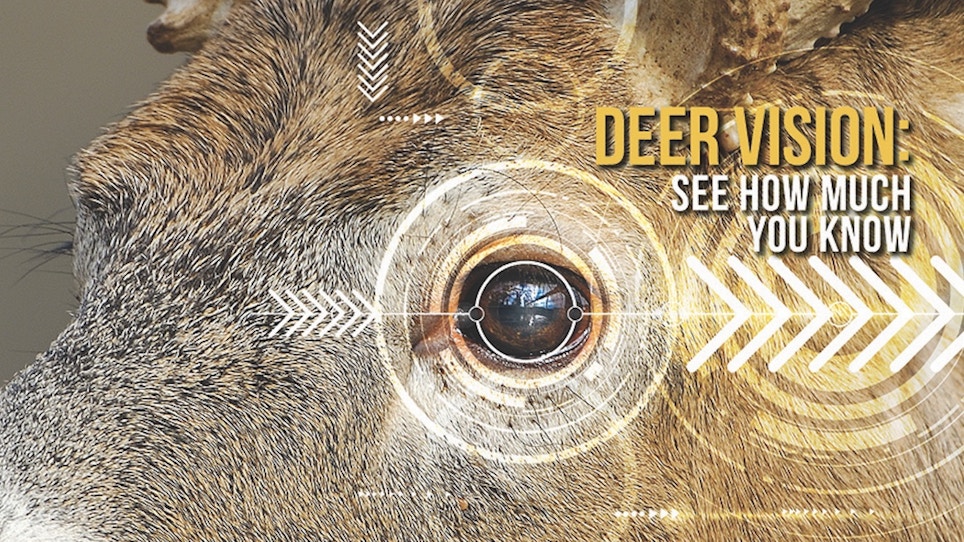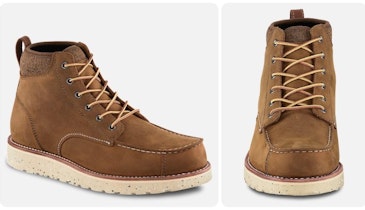There are a ton of reasons a deer spots you before you see them. For years the debate was all about color vision and the belief that wearing fluorescent orange put hunters at a distinct disadvantage. Truth is, they don’t see orange as the orange we see, and we’re still at a disadvantage when it comes to deer spotting you.
Deer Color Vision
To get us started, let’s look at a few basics on deer color vision. Deer do not see well in the longer and middle wavelengths (oranges, greens, yellows, browns and reds) in the visible color spectrum. These colors appear in shades of gray or yellow. Where they see very well is in the low wavelengths — the blue range. Does this mean that wearing blue jeans makes me more visible to deer? Yes, that’s probably correct.
And since they can see really well in the blue range, using detergents with brighteners puts more blue-range UV colors on our clothes and thus makes it easier to be seen by deer. Is that right? Though it’s a bit more complicated than that, in essence, that is apparently true.
A Deer's Vision, a Hunter's Clothing and Low Light
First as noted, the blaze orange color we see is not blaze orange for deer. It’s probably a shade of gray (unless you wash your clothes using detergents with brighteners). Second, clothes of one color, orange for example, will be a blob of gray to the deer. Big blobs of color are probably easier to see by a deer, than a camo pattern. You don’t want big “blobs” of any color. Thus, camo patterns help that problem. Camo patterns of greens, browns, grays, etc. will break up that “blob.”
Deer have other vision advantages we do not have. Their low-light vision is enhanced because they can open their pupil three times wider than we can. This allows the eye to admit a lot more light. Additionally, they have lots of rods, which are the receptors needed for low-light conditions. One researcher suggested a human's ability to see orange compares to a deer’s ability to see in low light. The conclusion was that in very short wavelengths (in the UV range), where we can’t see those UV colors at all, deer can see them, and they can see them better than we see blaze orange. It’s scary how well deer see in low light.
I’ve watched several hunting shows on television that talked about how you shouldn’t bother to hunt during the full moon because the deer could see at night and thus, fed all night and were inactive during the day. Think about this for a minute. Deer do a lot of moving around at night, so through evolution they have eyes that function at night. If they couldn’t see well at night, when there is no moon, they’d bed all night and feed all day. But that isn’t the case.
It also isn’t the case that when the moon is totally dark, deer are out there stumbling around, walking into trees. Why not? Because their eyes have a number of adaptations that allow them to see extremely well in low light. Maybe the moon affects deer movements and the rut, maybe not? But deer do not need moonlight to see at night.
Depth Perception and Visual Acuity
The eyes of deer are not as close together as ours so their depth perception is not good. They can spot a hunter moving, but may not readily know how far away you are. Compare that to humans or predators. Our eyes, and the eyes of predators, are close together giving better binocular vision. Really important for predators out their searching for a meal.
Though having eyes further apart reduces depth perception, it does have an advantage for deer. Having eyes further apart gives deer the ability to cover a lot of ground with their eyes. The added rods also give deer an extraordinary ability to detect movement. What hunters need to take away from all this is that movement is what does us in. So, don’t make unnecessary movements on stand. If you have to move, do so very slowly. And wear gloves.
This whole movement issue centers around visual acuity. Turns out that humans have sharp central vision, good visual acuity, whereas deer do not. When you focus on one spot, as you are right now in reading this, going from one word to the next, things in the periphery are not clear. They are blurred. When you focus on one spot, the further away from that spot, the blurrier it gets. Try it. Being able to see that word clearly is called visual acuity. In fact, when you go to the eye doctor and look at those “AE@” charts, your visual acuity is being tested.
What about a deer’s visual acuity? University of Georgia research showed that deer have 80 percent less acuity than we do. The reason ours is good is because we have an optic fovea that is located in the center of the retina and it is packed with many, many cones. That means that when we focus on one spot, we can see it clearly. On the other hand, deer have a band of photo receptors across the retina, rather than one central spot. This allows a deer to scan a wide field of view all at once, without moving their eyes, but they do not have as many cones in this narrow band as we do. Thus, the acuity to focus on one spot is not great. If you have a deer standing at 80 yards facing in your direction, looking at you, they will have difficulty seeing you if you do not move. But, if they are not looking directly at you, because they have those photo receptors all across the eye, they can see you. However, not clearly. Move, and your busted. Even when they aren’t looking directly at you.
Since deer have poor visual acuity, slow movements are harder for them to detect, and of course, wearing camo helps. OK, not totally. Movement even when wearing camo, will get the attention of deer. We all know that. If you flip up your arm, even in camo, you enhance the chance of being seen by a deer, even one that is not looking directly at you. Truth is, it’s movement that does the hunter in, and it is camo that allows you to move and sometimes get away with it.
Consider this question. Do you think a deer has a better chance of seeing you move your hands if you are wearing camo gloves or if you are not wearing gloves? The defense rests its case.
The key then, relative to deer vision, isn’t so much color, but rather their ability to see really well in low light, and their ability to detect movement. If on stand you flip your arm up, even in camo, you enhance the chance of being seen by a deer, even one that is not looking directly at you. Combine that with their ability to see better at dawn and dusk, and you start to understand that when it comes to a deer’s vision, there’s more than meets the eye.
Featured Photo: Fran Rand (iStock)






